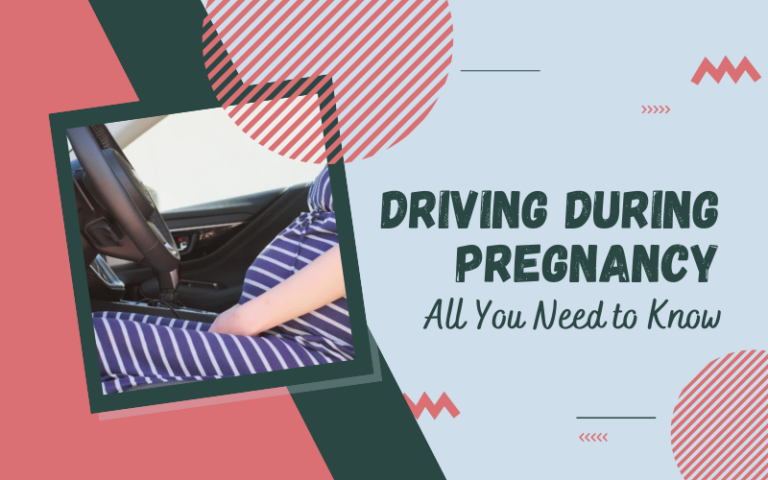Pregnancy is an exciting time. It can be nerve-wracking too. It’s a time for a lot of joy and planning. It’s a time for worry and questions.
A common question is whether or not the seat belt is really safe to use during pregnancy.
Surprisingly it’s not a topic commonly discussed between doctors and their patients. A 2007 study revealed only 48.7% of healthcare providers talk about driving and seat belt use with their pregnant patients (Weiss et al, 2007).
A quick search online will inform you that the seat belt is safe to use if you wear it correctly — under the belly and across the midchest/mid-shoulder.
I’m going to confirm that statement and explode the myth that the seat belt will protect you and your baby in a crash. How is that possible?
Before I go into confirming and exploding the same statement, let me share why it is so important to discuss. Important enough it should be discussed more often.
5 Facts You Should Know
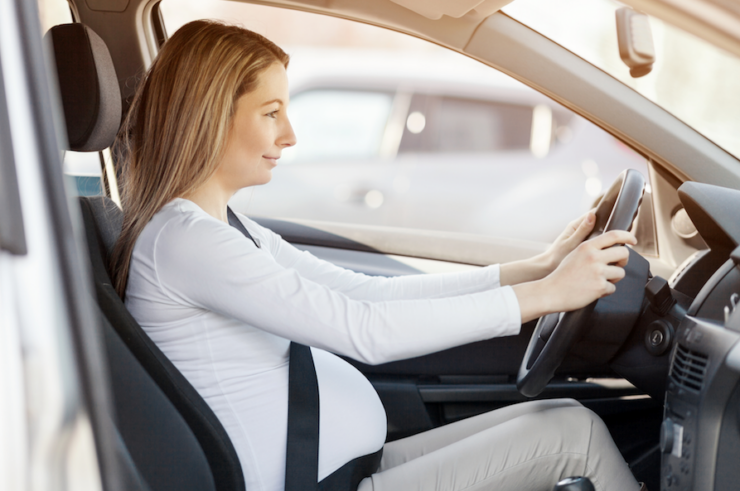
- A 2008 study by the University of Michigan estimates about 170,000 car crashes in the U.S. each year involve pregnant women. On average, 2.9% of women report being injured in a car crash during pregnancy. (Klinich et al, 2008) Based on an average of 4 million babies born a year, there are 116,000 crashes where a mom-to-be is injured, at least somewhat.
- An estimated 3,000 pregnancies are lost every year because of car crashes. This is an average of estimates from the 24 driving during pregnancy studies we’ve reviewed with a low of 370 and a high estimate of 5,000.
- The risk of the baby dying during pregnancy because of a crash is 5 times the risk compared to the first 9 months of a baby’s life. This number is based only on the 227 pregnant mothers and babies who died compared to the 60 newborns who died in traffic crashes in 2012. The risk ratio is thought to be highly underestimated because “the risk of crashing is increased during pregnancy, and we have ignored the many cases in which the mother survives but the fetus does not,” the researchers explained (Evans, Redelmeier, 2015).
- Comparatively speaking pregnancy loss from a car crash is a greater issue than:
- Children who die in hot car deaths (about 32 a year)
- Children who die in a home fire (about 365 a year)
- Children who die drowning (about 600 a year)
- Children who die in a car crash spread amongst ages 0 to 12 (about 650 a year)
- These numbers are just looking at the number of pregnancies lost in a car crash and do not account for the other possible adverse outcomes like disabilities resulting from in-utero injuries, complications from emergency delivery and head trauma — the most common direct fetal injury. Fetal death can occur even if the mother has no visible injuries. (Friese; Wojciehoski, 2005)
Is the Seat Belt Safe to Use During Pregnancy?
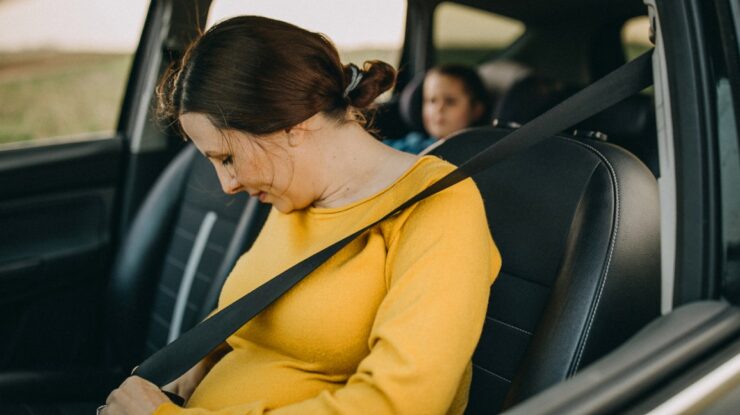
It is definitely safer to wear the seat belt than to not. The seat belt is your first line of defense during a crash.
The purpose of the seat belt is to help the occupant remain in the seat during a crash. It is much more dangerous for anyone (including the other occupants) to be unrestrained. During a crash, someone not wearing a seat belt could either be a large projectile flying about the car — hard to imagine, I know, but there is an incredible amount of energy in a crash — or even get thrown out of the car. The potential for life-threatening injuries goes up 5 times — some resources say up to 25 times — when someone is thrown outside the car.
The seat belt functions by cinching down on the pelvic bones and shoulder. That piece of webbing is very strong and does its job well. Remember when the car comes to a sudden halt, your body still wants to move at the speed the car was going.
So you definitely want to wear your seatbelt during pregnancy.
Exploding the Myth the Seat Belt is Adequate
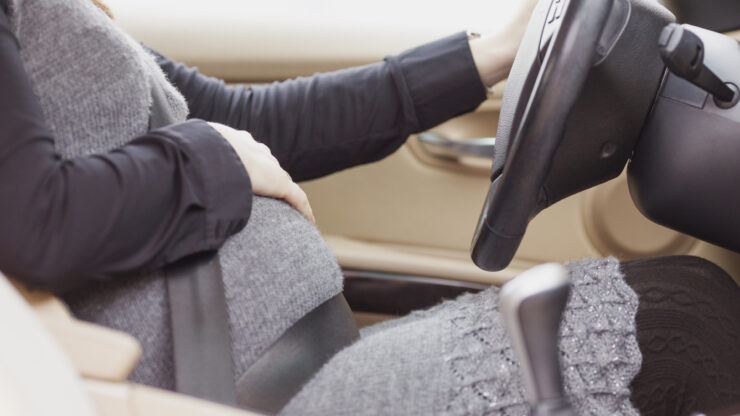
With that said, even the National Highway Traffic Safety Administration warns the baby can be injured “from crash forces concentrated in the area where the seat belt crosses the mother’s abdomen.”
In the first trimester, the uterus is still low in the abdomen and surrounded by the pelvis. In the second and third trimesters, it grows upward and outward. The pregnancy loses the protection of the pelvic ring and displaces other abdominal organs. (Friese; Wojciehoski, 2005)
Now that doesn’t mean any crash will injure your baby. There are other factors that play into injury potential, including how far along the pregnancy is, how mom is carrying the pregnancy and how fast the car is moving. The speed of the crash is a big factor but injuries can occur that affect the pregnancy even in low-speed crashes.
How can we increase safety for pregnant moms if buckling up is the safest option but still not fully protective?
3 Things to Do to Increase Your Safety
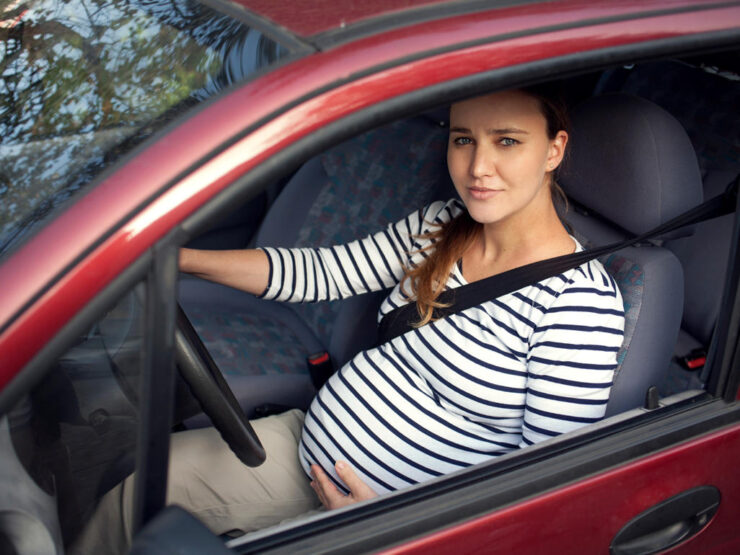
- Be a passenger. This doesn’t take the seat belt out of the equation but it does to the steering wheel out of the equation and reduces the airbag factor. You can push the seat back farther to reduce airbag contact.
- Wear your seat belt along with a crash-tested pregnancy seat belt adjuster that is made of crash-quality materials. Make sure it’s of high quality and crash-tested because there are some available that could make the situation worse.
- Believe it or not, a 2014 study showed pregnant women are more likely to be in a crash. Researchers believe this is because of fatigue or feeling nauseated while driving. (Redelmeier; Thiruchelvam, 2014) So before you drive, gauge how you feel. If you are tired, postpone driving or ask someone else to drive. This is another time those rideshare apps come in handy!

